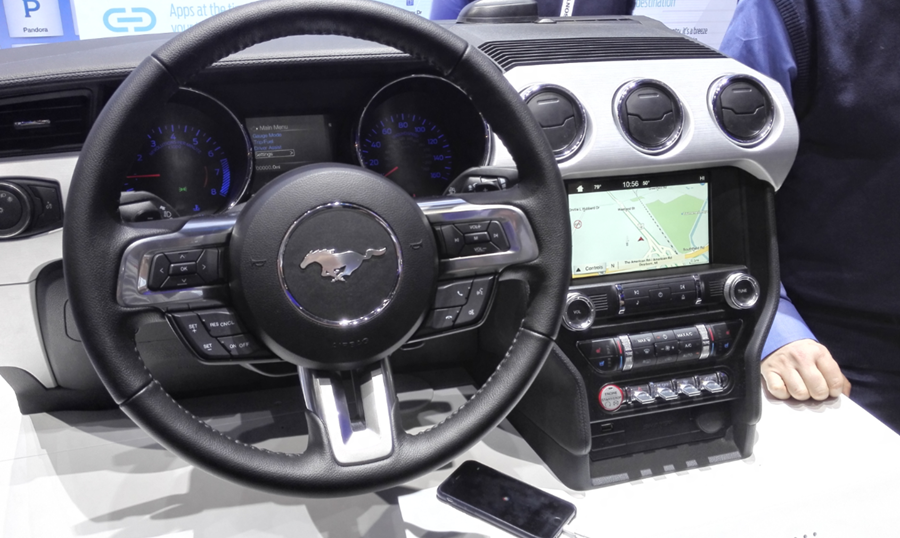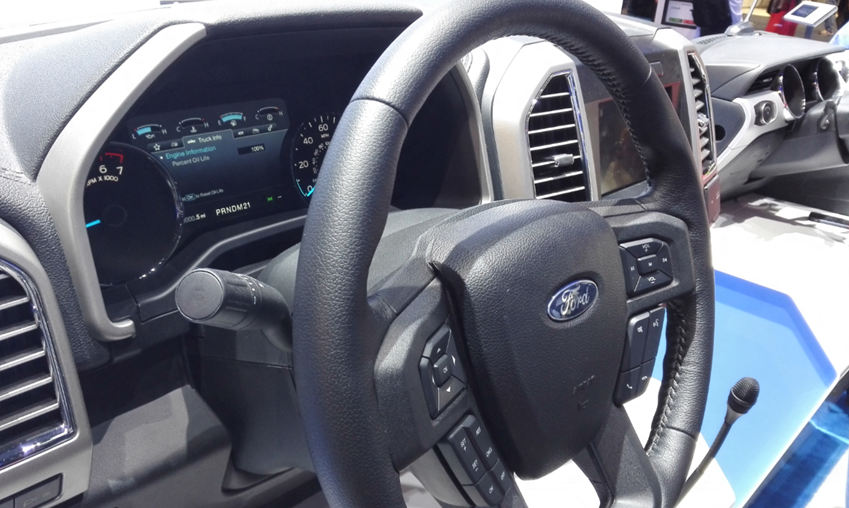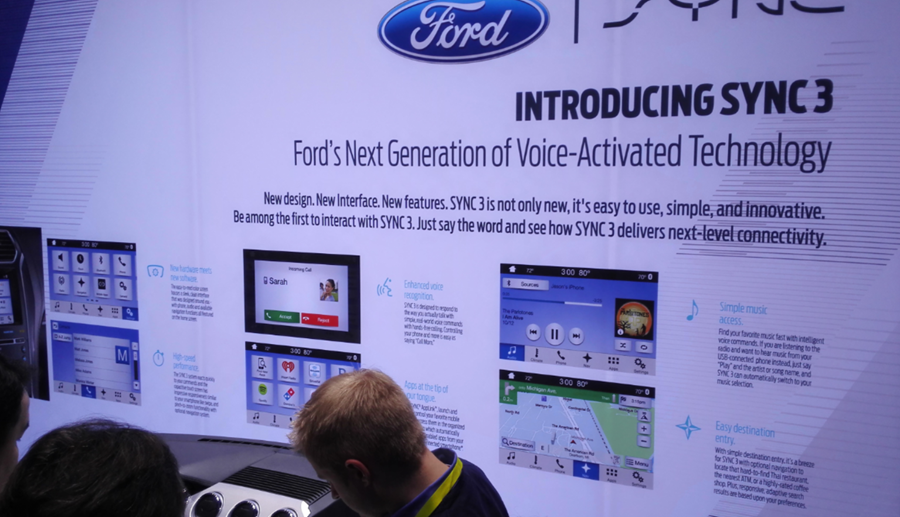In December last year, Ford announced the big shift from Microsoft’s Automotive platform to Blackberry’s QNX. Many reported this as a breakup between the two giants, but Ford insisted the relationship was still strong, despite the move. QNX currently holds around 60% market share of all in-car infotainment systems and to move to the market leader makes a lot of sense. The SYNC team inside Ford clearly wanted to move the platform forward and felt the underlying hardware and software stack wasn’t capable of servicing what they and their customers demanded.
Ford remain pretty tight lipped about the decision to move, but the combination of Ford services leveraging Windows Azure and the new Ford GT being the cover car for Forza 6 does confirm the relationship is still in-tact. The loss seems to be a big blow to Microsoft’s Windows Embedded Automotive 7, as they (still) list Ford as the first company of just 4 that use their platform. Fiat, Nissan and Kia are the remaining customers, but without the biggest, Ford, it’s questionable how invested Microsoft is in the platform.
The new SYNC3 answers some of my biggest complaints about SYNC. The first is over the air updates, this means you can download updates, instead of taking it to the dealer or using the clumsy USB sneaker net. The new ability to update the software via Wi-Fi means once a vehicle is set up with credentials for the home Wi-Fi (one time setup) the car can connect when it reaches the driveway or garage and download the updates.
They also wanted a fast and smooth user experience when interacting with the interface. After using SYNC3 at CES, I can confirm the responsiveness of the screen is night and day compared to SYNC with My Ford Touch displays. Of course you can interact with improved voice commands that accommodate even more natural language commands than before and smartphone-like gestures like pinch-to-zoom and swipes.
The interface of SYNC3 is significantly different to all previous SYNC versions. The crisp, modern graphics feel a lot higher resolution before, the bright background and large buttons with high-contrast fonts should work great for daytime use help reduce screen washout in the sun. At night, the display automatically switches to a dark background to help reduce eye fatigue and minimize reflections on the windows.
“We considered all the modern smartphones and mobile operating systems and created something familiar but unique,” said Parrish Hanna, Ford global director of Human Machine Interface.
SYNC 3 reduces on-screen complexity and prioritizes the control options customers use most. For an advanced user, there’s really not a lot to it and after only a few minutes with the system, I felt I knew it inside and out. This is great if you’re a basic user who just wants to drive, but I would like to see them add advanced controls for power users. The home screen features three zone choices – Navigation, Audio and Phone. Tile-like icons dominate the screen, with a quick access function tray along the bottom making for a more straight-forward user experience.
When connected to an Apple iPhone, SYNC 3 offers seamless integration of Siri Eyes-Free control. Drivers can seek Siri’s help by holding down SYNC’s “Push to Talk” steering wheel button – much as they would hold down the button on an iPhone to initiate a Siri session. Regardless of how evolved an in-car voice assistant is, the one on your phone, will always be better. Siri, Google Now or Cortana should all be supported as you’re phone currently does far more than your car can (even with SYNC3). Allowing users to safely leverage this power through the in-build phone assistant (via the steering wheel) is a great addition, just remember, it’s only Siri for now.
Ford announced this week that SYNC AppLink the technique used by developers to get their apps to the car, is now moving to version 3.0. The first piece of new functionality with AppLink 3 is the ability for customers to access their favorite compatible navigation app – much as they do on a smartphone – on in-vehicle touch screens. This means if the developers of Waze, Sygic, TomTom, Garmin and other’s make their apps AppLink enabled, users will be able to set a destination at home or the office, then when they get in their car, the route will be displayed on the in-dash screen.
Overall the upgrade is a solid one and the good news is the platform shift doesn’t mean any work for developers. SYNC had a series of APIs that developers would write to, to access the hardware of the vehicle. Ford engineers have done the hard work of developing matching APIs on QNX, which means the apps which support SYNC today, will just keep working going forward. Surprisingly we’re only seeing entertainment apps so far, in the current release, Ford added the capabilities for developers to leverage a fairly extensive set of vehicle data. This would allow developers to create apps for enthusiasts that matched GPS tracking with throttle position, steering angle etc.
Microsoft have always been able to make great visionary videos of what the future of vehicles will be like, but the execution has just never been there. At Build last year, Microsoft demonstrated a concept for Windows in the car, not an underlying OS that OEMs build on top of, but an actual, Windows OS. This had all the standard apps you’d expect, like calls, music, etc, but also suggested this would be a platform that application developers could build for. This would provide the freedom for application developers to create the UI they want, rather than be restricted by platforms like Android Auto and Apple’s CarPlay.
After getting hands-on with SYNC3, it’s clear Ford made the right decision to jump now. Everything at Microsoft right now seems on-hold in the lead up to the Windows 10 release. It’s plausible Ford gave Microsoft a list of the features the wanted to achieve with SYNC and the timeline for Windows Embedded 10, didn’t make sense for Ford. Moving to the industry-leading platform was a good starting point, but Ford now needs to differentiate and iterate faster than other auto makers using the same architecture.
Ford are still not confirming which vehicles will get SYNC3, but have told us that the aggressive rollout will surprise you. When asked if there’s a chance that the company could draw a line in a sand and every vehicle produced after that day rolls out with SYNC3, the answer was interesting. The question of upgradability was also raised as many SYNC2 owners are keen to know where they stand.
We are told that while no official upgrade path is to be offered, the physical dimensions of SYNC 3 are exactly the same as SYNC 2, so there’s potential for a hardware upgrade. If you’re one of the more than 10 million SYNC owners, you should know those two versions will continue to be supported.
Disclaimer: Jason attended CES2015 as a guest of Ford Motor Co. His opinions are his own.



